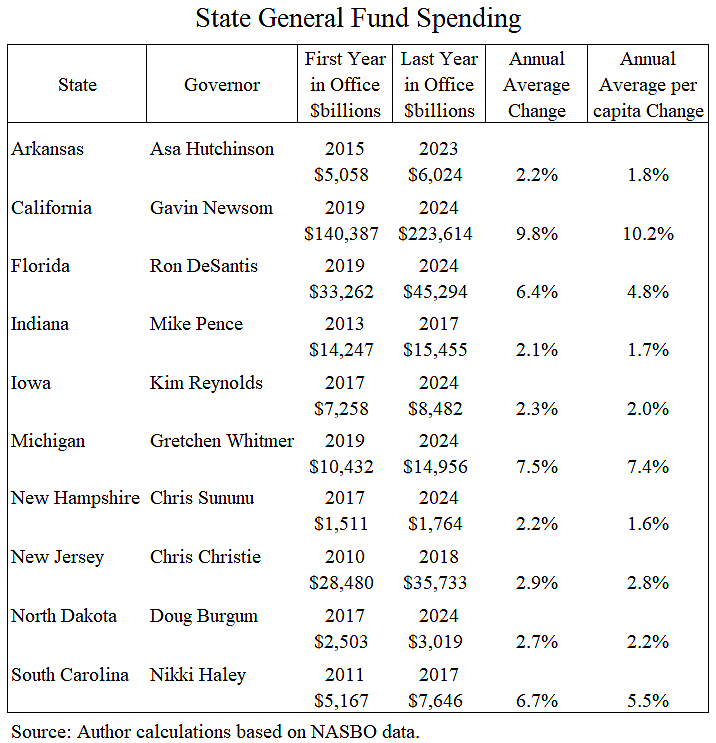
Chris Edwards
The next president will face a huge federal budget mess. Spending is driving up debt to unprecedented levels and is pushing federal intrusion ever deeper into state, local, and private affairs.
The most important question we should ask of 2024 presidential candidates is will they cut spending? Will they use their bully pulpit and budgeting powers to push Congress to cut?
The next president must be a dedicated spending cutter. Numerous candidates for the White House have track records on spending as governors. The table below includes governors who are in the race and some governors who are possible candidates.
The table shows general fund spending, which is the part of state budgets that governors have the most control over. The table shows spending for the first and last fiscal years each governor was in office. For governors still in office, the last year is their proposed spending for 2024. The table shows the annual average percent change in spending, and the change on a per‐capita basis because state population growth rates differ.
By these metrics, the most frugal governors have been Asa Hutchinson, Mike Pence, Kim Reynolds, Chris Sununu, Chris Christie, and Doug Burgum, while the least frugal has been Gavin Newsom, Ron DeSantis, Gretchen Whitmer, and Nikki Haley.
Some caveats are discussed below. Also, broader fiscal assessments of these governors are available in Cato’s fiscal report cards.
Notes and Caveats
The spending data is from NASBO fiscal reports. The most recent report includes 2022, 2023, and 2024. For prior years, I used the final “actual” figures from previous editions.
General fund spending growth is just one measure of a governor’s fiscal performance.
Governors share fiscal powers with state legislatures, which may or may not be controlled by the same party.
The recent high inflation may have increased averages for current governors, although some current governors, such as Kim Reynolds, have nonetheless held spending down.
California’s per‐capita spending increased more than total spending because the state’s population is shrinking.
I used Census actual state populations up until 2022, and then estimated 2023 and 2024 based on the growth in 2022.
Broader discussions of these governors and their fiscal policies are in Cato report cards.








